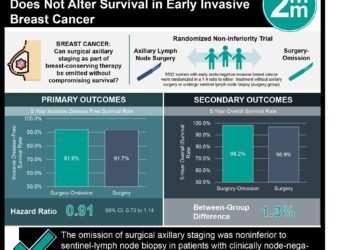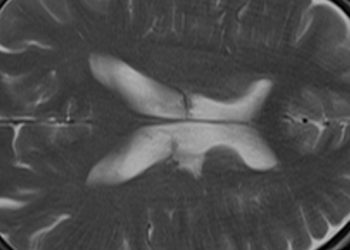2 Minute Medicine Rewind January 29, 2024
Maternal autistic traits and adverse birth outcomes
1. A cohort study found that increased maternal autistic traits were associated with a greater risk of adverse birth outcomes.
2. Women who scored in the clinical range for AQ-J10 were more likely to be young and have higher levels of psychological distress.
Evidence Rating Level: 1 (Excellent)
Autism spectrum disorder (ASD) is a neurological and developmental disorder affecting individuals throughout their life and is characterized by different communication mechanisms and repetitive actions. Recent study findings have indicated that women with ASD may experience health challenges while pregnant, including inadequate access to care, chronic health conditions, higher stress levels and a greater risk of pregnancy complications. As there are limitations in previous studies, this study aimed to focus on women with ASD traits rather than only those diagnosed with ASD. Focusing on women with ASD traits helped the researchers not only to determine if there was an association with health challenges but also to provide support to pregnant women with ASD, regardless of receiving a formal diagnosis. The goal was to look at the association between maternal autistic traits and birth outcomes. The maternal autistic traits were measured during the second and third trimesters. A total of 87687 women (mean [SD] age, 31.2 [5.0] years) were recruited for between January 2011 and March 2014. The Autism-Spectrum Quotient Japanese version (AQ-J10) was used to measure maternal autistic traits through a self-reported questionnaire using only ten items with answers measured on a 4-point Likert scale. Scoring higher on the test indicated a higher level of autistic traits in the mother. The test reported a sensitivity of 0.76 and a specificity of 0.90. for the sample, the mean (SD) AQ-J10 score was 2.8 (1.7) with 2350 (2.7%) scoring above the threshold, however, only 18 (0.02%) of these women were diagnosed with ASD. Women who scored within the clinical range were more likely to be younger, have a lower education attained, smoked during pregnancy, and had higher distress scores compared to the women below the clinical range. A 1-SD increase in AJ-Q10 score was correlated with an increased risk of preterm births, moderate-to-late preterm births (), very preterm births, and SGA infants (RR per 1-SD). The higher the level of maternal autistic traits, the greater the risk of being preterm (RR, 1.16;95% confidence interval {CI}, 1.06-1.26), moderate-to-late preterm (RR, 1.12; 95% CI, 1.03-1.22), very preterm (RR, 1.49; 95% CI, 1.18-1.89) or small for gestational age (SGA) (RR, 1.11, 95% CI, 1.04-1.19). Very preterm birth had the highest relative risk (RR) found (RR, 1.16; 95% CI, 1.06-1.26). For all the outcomes, there was a higher probability associated with a higher level of maternal autistic traits. Overall, the findings show that women with higher levels of autistic traits were associated with having a higher risk of adverse birth outcomes.
1. Diabetes remission was achievable for participants through weight loss by surgery or lifestyle changes.
2. At a median follow-up of 3.1 years, two thirds of patients who achieved remission returned to a hyperglycemic state.
Evidence Rating Level: 2 (Good)
A commonly held belief is that there is no cure for type 2 diabetes. Optimistically, recent clinical trials have shown that remission is possible through sustained weight loss in overweight or obese individuals. Early weight control, especially within the first year after diagnosis, is extremely important in those with type 2 diabetes as it can prevent diabetes-related complications while also improving outcomes in the long term. Those included in the study were individuals who were recently diagnosed with type 2 diabetes between the ages of 18-75 years, and who had their first RAMP-DM assessment between January 1, 2000, and December 31, 2017. Individuals with extreme BMI or who had pre-existing cardiovascular disease, cancer, or end-stage renal were excluded to reduce the likelihood of confounding variables altering the results. This selected population was then divided into 4 different groups based on their weight change after 1 year. The incidence of remission of type 2 diabetes was the primary outcome investigated and was compared through the 1-year change in weight circumference with the incidence of diabetes remission and the incidence of returning to a hyperglycemia state. Of individuals who lost the most weight in the year, the majority of them were women and had higher baseline measures such as blood pressure and lipid levels. As well, these individuals were less likely to be current users of alcohol or tobacco. At baseline, the mean BMI was 26.4 (SD: 4.2) kg/m2, and the mean HbA1c was 7.7% (SD: 1.8%). After the 1 year, 40.2% of participants had a weight loss of 0% to 4.9%, 2.8% had a weight loss of ≥ 10%, 10.4% had a weight loss between 5% to 9.9%, and 46.6% of people gained weight. After following the patients for a median time of 7.9 years, 6.1% of people achieved remission. Losing more weight had a greater association with diabetes remission. Along a median follow-up time of 3.1 years, 67.2% of those who achieved remission returned to their hyperglycemic state. The crude incidence rate for this was 184.8 (95% confidence interval {CI}: 175.5, 194.0) per 1000 person-years. Overall, the study shows that people living with type 2 diabetes can achieve and maintain remission following weight loss.
Out-of-hospital cardiac arrest following the COVID-19 pandemic
1. Survival for out-of-hospital cardiac arrests (OHCA) significantly increased in the post-pandemic period.
Evidence Rating Level: 2 (Good)
The COVID-19 pandemic had negative health consequences that particularly affected time-dependent conditions, one of those being out-of-hospital cardiac arrest (OHCA). This study examined OHCAs through an observational cohort study mechanism. After assessing individuals for eligibility in the study, 14732 patients were included, with 6372 considered prepandemic, 1409 in the pandemic period, and 6951 in the postpandemic period. The postpandemic period showed a higher incidence of OHCAs with a resuscitation attempt compared with the pandemic period (20.0 per 100 000 vs 24.6 per 100 000 person-years; RR, 4.93; 95% CI, 4.66-5.22; P<.001). Additionally, fewer OHCAs were occurring at home, with a reduction from 68.1% to 60.4%, whereas more OHCAs with a bystander performing CPR occurred (29.2% vs 41.7%; RR, 1.09; 95% CI, 1.07-1.11; P<.001). Furthermore, a significant increase of 59.3% to 70.3% was found in the use of endotracheal intubation for airway management. Another increase was seen as the proportion of patients with ROSC in the hospital went from 20.5% to 30.4% (RR, 1.08; 95% CI, 1.06-1.10; P<.001). The amount of resuscitation attempts was recorded in OHSCAR; however, this registry does not include OHCAs where EMS did not initiate the procedure, making it inaccurate. In summary, when compared to the prepandemic and pandemic periods, the postpandemic period was associated with changes in OHCA, associated with an increase in survival rates.
Neurological development in children born moderately or late preterm: national cohort study
1. Moderately or late preterm infants were found to have an increased risk of neurological outcomes at a median follow-up of 13 years.
Evidence Rating Level: 2 (Good)
Preterm babies have greater risks of developing behavioural or neurological disabilities throughout their childhood compared to babies born at term. However, babies born moderately preterm (32-33 weeks) or late preterm (34-36 weeks) often go unstudied, despite them accounting for the majority of preterm births, which pose a huge burden on the healthcare system. To further characterize this link, researchers assessed a cohort of 1281690 live births with 7525 (0.6%) born at 32-33 weeks, 48772 (3.8%) born at 34-36 weeks, 257591 (20.1%) born at 37-38 weeks, 713952 (55%) born ay 39-40 weeks, and 253850 (19.8%) born at 41 weeks. Many of the preterm children were also found to have a low birth weight for gestational age (<10th centile). In the follow-up period (median = 13.1 years), 75311 children had any neurodevelopmental impairment, with the majority of them only presenting with one impairment. When comparing moderately preterm to normal-term children, the risk difference for any impairment was found to be 4.75% (95% confidence interval {CI} 3.88% to 5.60%). These cohort study results show that compared to babies born at term, babies born moderately or late preterm had higher risks of long-term neurodevelopmental outcomes. The risks were found to be highest at the 32-week mark and started decreasing as the pregnancy was further into the term. Additionally, babies were compared by their birth weight and through that it was found that infants born small for gestational age had increased risks of neurodevelopmental impairment compared to babies born with normal weight. Since some neurodevelopmental outcomes have similar clinical signs, it was difficult to distinguish among them, thus a few were not included in the study at all. These excluded outcomes could have been underreported in the sample, resulting in an underestimation of associations. In all, moderately and late preterm infants had long-term neurodevelopmental impairments in several areas.
1. Women with non-screen detected ductal carcinoma in situ had worse outcomes for the 25 years following their diagnosis.
2. When compared with surgery, mastectomies had better results at lowering the risks of invasive breast cancer.
Evidence Rating Level: 2 (Good)
A breast screening program developed by the National Health Service has contributed to the increased incidence of ductal carcinoma in situ. However, not all women with this type of cancer have been diagnosed through the screening program. A study examining outcomes of a population of 27543 women in England who had been diagnosed with non-screen detected ductal carcinoma in situ as their first cancer diagnosis. By the end of 2018, 3651 women in this study developed invasive breast cancer with a rate of 13.28 (95% CI 12.85 to 13.71) per 1000 women, years overall. Based on breast cancer rates in the general population, the rate of invasive breast cancer was four times more than expected. The observed to expected rate ratio was 4.21 (95% CI interval 4.07 to 4.35) with the rate also varying with age. During the study, the death rate for breast cancer was 3.05 per 1000 woman years average, and 908 participants died from non-screen detected ductal carcinoma in situ. Cumulatively, the risk of breast cancer was followed for the next 25 years and was found to be 7.6% for <45 years, 5.8% for 45-49 years, 5.9% for 50-59 years, and 6.2% for 60-70 years of age. English women who were diagnosed with ductal carcinoma through mechanisms other than screening had a four times higher risk of invasive breast cancer along with death from breast cancer than women in the general population. Between the eligible screening ages of 50-64, there were 9679 women diagnosed with non-screen detected ductal carcinoma in situ. In contrast, 31141 women in the same age range were diagnosed via screening. When comparing ductal carcinoma in situ between women who were diagnosed through non-screening compared to those via screening, the ratio was 1.26 (95% CI, 1.17 to 1.35). While the ratio for breast cancer mortality was 1.37 (1.17 to 1.60), for the 22753 patients surveyed with unilateral ductal carcinoma who elected for full mastectomy, they had a lower overall rate of invasive breast cancer in the 25 years (mastectomy 8.2% (95% CI 7.0% to 9.4%), breast-conserving surgery along with radiotherapy 19.8% (16.2% to 23.4%) and breast-conserving surgery alone 20.6% (18.7% to 22.4%)). It was also found that women diagnosed with breast cancer more recently have lower rates of death, possibly due to better treatment methods. Regarding the women who were not diagnosed with screening, there was no information on the route of diagnosis they experienced. Overall, after receiving a diagnosis of ductal carcinoma, there is an increased risk of invasive disease and death lasting for at least 25 years, regardless of the detection method. The study results suggest that women who undergo a mastectomy have lower long-term risks compared to women who receive breast-conserving therapy.
Image: PD
©2024 2 Minute Medicine, Inc. All rights reserved. No works may be reproduced without expressed written consent from 2 Minute Medicine, Inc. Inquire about licensing here. No article should be construed as medical advice and is not intended as such by the authors or by 2 Minute Medicine, Inc.







